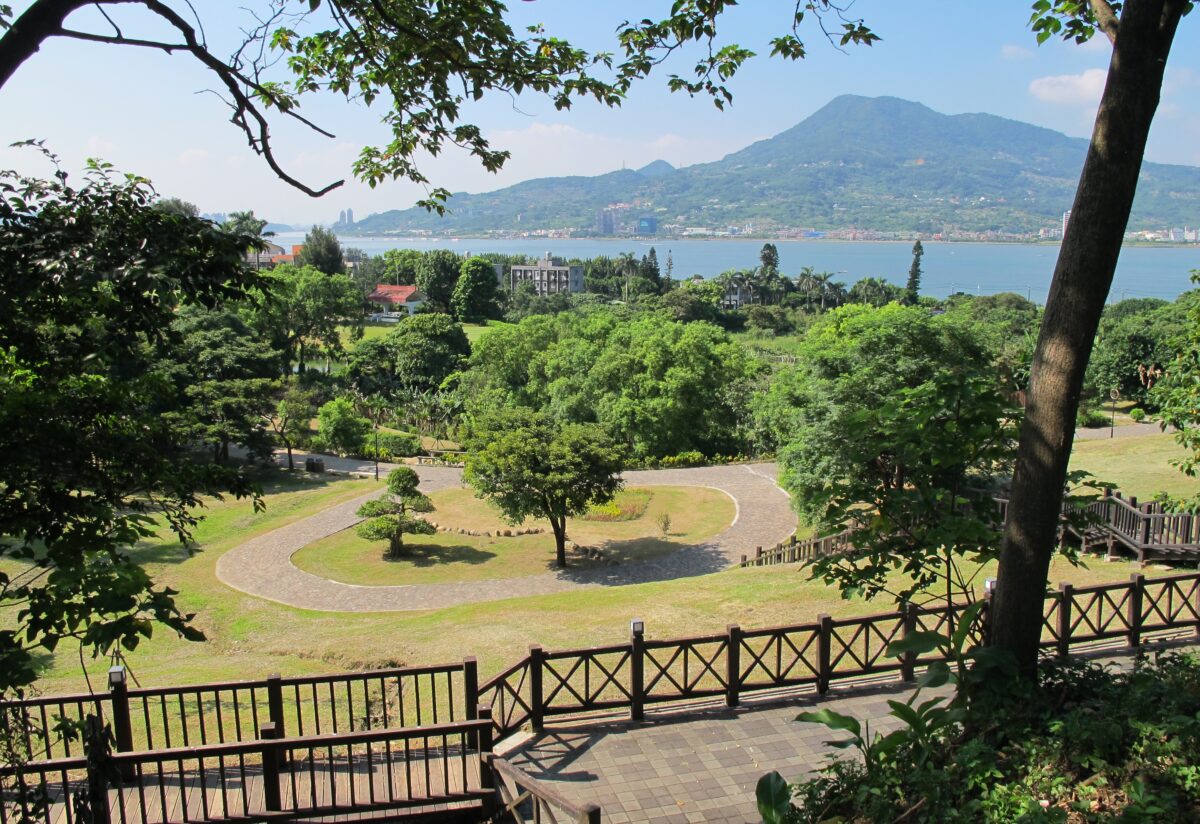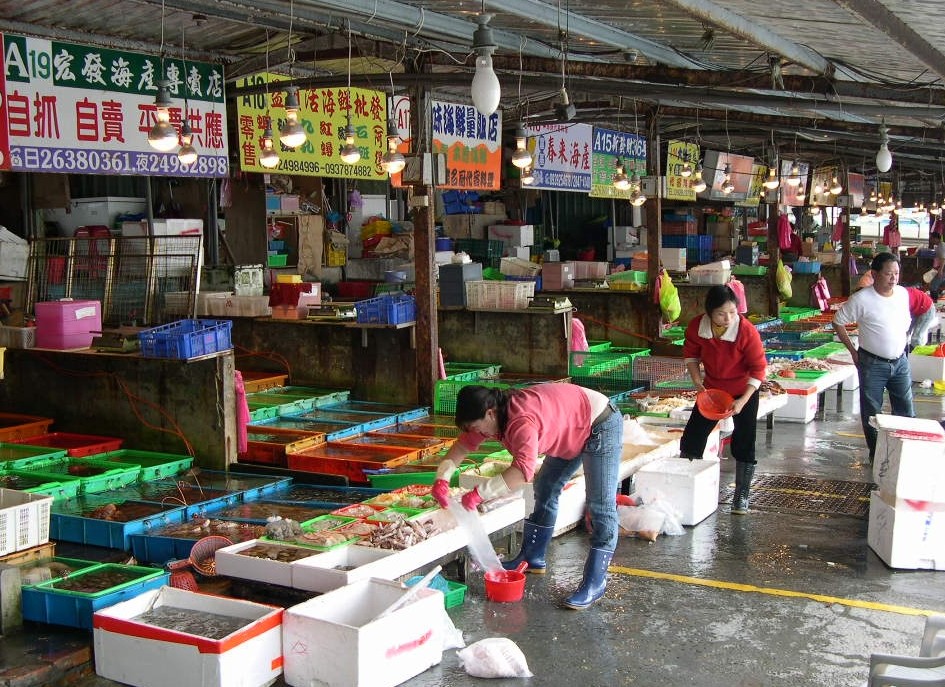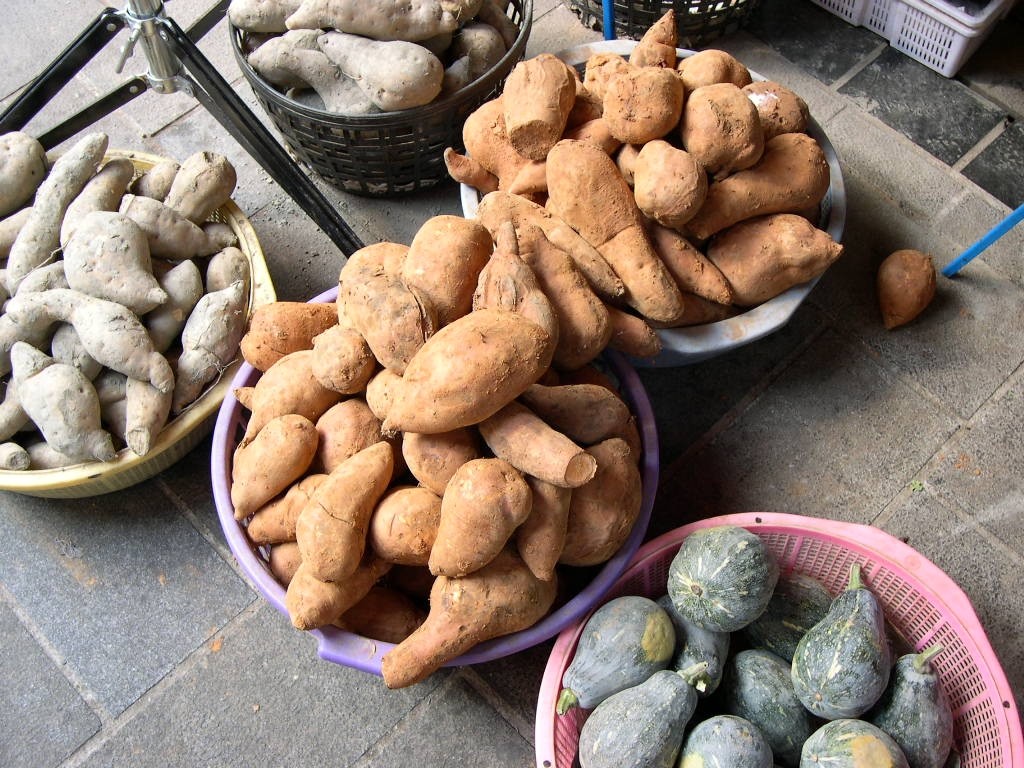Taiwan’s North Coast and Guanyinshan National Scenic Area presents the very best of the northern tip of Asia’s most exciting destination. Offering a captivating blend of dramatic geology, breathtaking ocean views, and rich cultural experiences, ‘Northguan’ as it’s sometimes called promotes two patches of terrain. One is just across the river from the historic town of Tamsui. If you’re standing in the centre of Taipei, the other (and much larger section) is beyond Yangmingshan National Park.

Guanyinshan viewed from Tamsui’s Peace Park
In this article — the first of a series shining the spotlight on Taiwan’s 13 national scenic areas — we’ll introduce some of the highlights of an easily accessible region that’s hugely popular with both Taiwanese daytrippers as well as travellers from afar.
The artist called Mother Nature
The coastline itself is an art gallery filled with Mother Nature’s sculptures. Some of the finest masterpieces carved by wind and wave, such as the Queen’s Head and the Fairy’s Shoe, are in Yehliu Geopark. But those with an aversion to crowds and coach parties can find beauty elsewhere, especially if they’re accompanied by a knowledgeable local or an experienced guide. The natural sea arch carved by erosion at Shimen stands as another testament to the area’s special geology. The Tiaoshi Coast gets its intriguing name (Tiaoshi means ‘jumping over rocks’) because there’s so little flat land between the shoreline and the steep hillside; before a road was built, people travelling from one fishing settlement to the next had to wait until low tide, then clamber across the volcanic boulders that litter the coast hereabouts. You’ll be relieved to hear that all of Taiwan’s volcanoes are now classed as dormant or extinct…

Fresh seafood is available at several places along Taiwan’s north coast.
If you follow the coast north of Tamsui, you’ll encounter a succession of small communities. You’re never far from a fresh panorama worth lingering over, a restaurant serving fresh seafood, or — should you need one — a bathroom or a convenience store. Among these little towns are Sanzhi, hometown of Lee Teng-hui (the first president of Taiwan actually born on the island) and Laomei, known for its photogenic green algal reef.
One of the most-visited cultural attractions within the scenic area is the Temple of Eighteen Deities. By Taiwan standards, this shrine is quite new, dating from the 1960s, but the location has held religious-spiritual significance for at least 200 years. According to local legend, a shipwreck near here resulted in the deaths of all 17 people aboard. The only survivor was a dog, and it’s said that, when the drowned unfortunates were being interred, the animal jumped into the grave so it could be buried with them. This act of great loyalty was so impressive that the canine was eventually deified, along with the 17 humans. In due course, the temple became popular with those who like to gamble or buy lottery tickets.
A Buddhist hiking experience
This article may have convinced to add the north coast to your itinerary, but you might still be asking: What about Guanyinshan?

Local produce for sale in Jinshan
While it’s far from the highest mountain in Greater Taipei, let alone in all of Taiwan, this 612 m / 2,008-ft-tall hill is very visible from Tamsui and highly rated as a sunset-viewing spot. It gets its name, that of the Buddhist goddess of mercy, because its silhouette is thought to resemble a reclining Guanyin. Reasonably fit individuals can reach the top in less than an hour, or include it as part of a much longer trek, depending on their interest and ability. So long as the weather is fairly clear, from the summit there are great views out to sea, back towards central Taipei, and across the estuary to Tamsui and Yangmingshan.
Beyond the national scenic area
If you can’t get enough of land-meeting-the-ocean scenery, expand your trip to include Taiwan’s northeast. The former mining towns of Jiufen and Jinguashi are well known and very much on the beaten path. The seaside villages of Magang and Maoao don’t get many foreign visitors, but among Taiwanese who adore traditional communities and lifestyles they win plaudits. The former has Taiwan’s easternmost fishing port while the latter was in 2012 listed by the government as one of the nation’s ‘Charming Fishing Harbors’.
The alluringly quaint stone cottages in Magang and Maoao that have endured more than a hundred windy winters. Their conservation status is uncertain but the more visitors they attract, the better the odds they’ll be preserved. If you do come here, you may see locals sun-bleaching umutgasari, an edible red algae found throughout Northeast Asia, to prevent it spoiling.
Magang and Maoao are served by regular buses, but if you’d rather not be limited by public transport schedules and routes, consider asking Life of Taiwan to create a customised itinerary that’ll save you time and give you far greater flexibility. Our private guided tours of Taiwan have earned a rating of 4.9/5.0 on TripAdvisor. Contact us today and begin planning the Taiwan trip of a lifetime!
